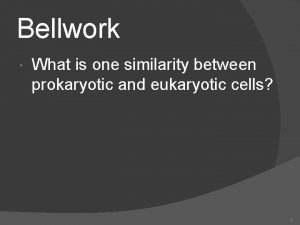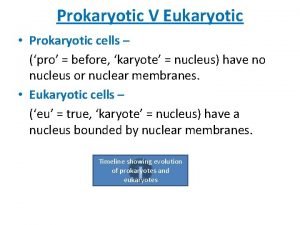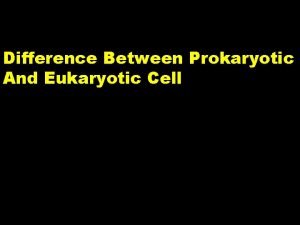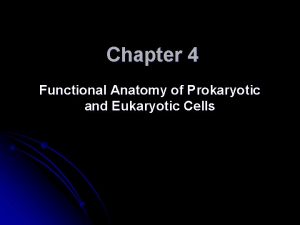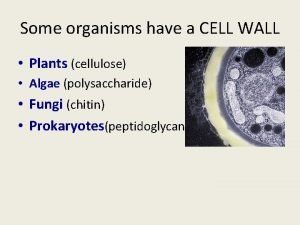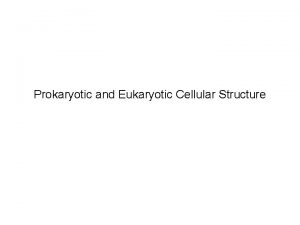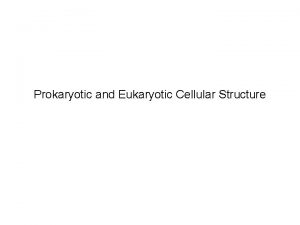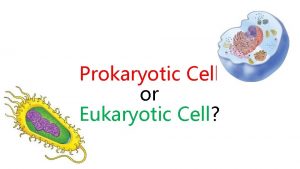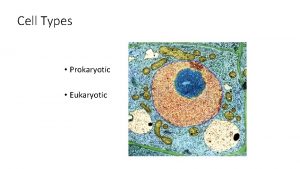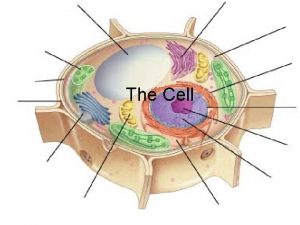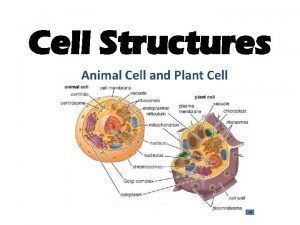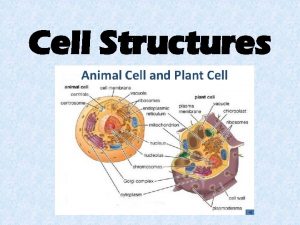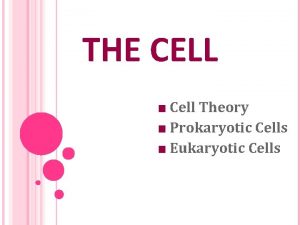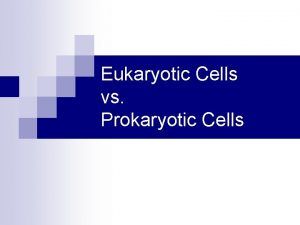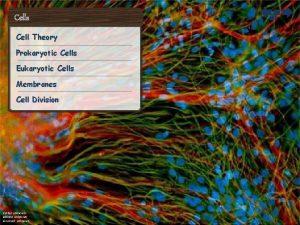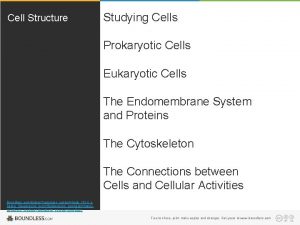Cell Structures I Prokaryotic vs Eukaryotic Cells CELLS


















- Slides: 18

Cell Structures

I. Prokaryotic vs. Eukaryotic Cells CELLS Prokaryotic Smaller • No True Nucleus - Genetic material is found in cytoplasm. • No specialized organelles *except ribosomes EX: Bacteria & Archaea Eukaryotic Larger • True Nucleus - Genetic material is bound by a membrane • Contain specialized organelles EX: Plants, Animals, Protists, & Fungi



Animal Cell

Plant Cell wall

Structure Cell Wall Function/Other Info • Support & protection • Lies outside cell membrane • Not in animal cells • In Plants, made of cellulose • In Fungi, made of chitin • In Bacteria, made of peptidoglycan • Controls what enters/ leaves the cell (selectively permeable) Cell Membrane • Composed of lipids & proteins *Transport & Excretion

Structure Cytoskeleton Function/Other Info • Supporting network of long, thin protein fibers in cytoplasm • Made of microtubules and microfilaments – Microtubules: made of protein tubulin, form rigid skeleton, assist in moving substances within cell (organelles, vesicles, chromosomes); also help build centrioles, cilia and flagella (hair-like structures used for cell movement) – Microfilaments: made of protein actin, give cell shape, enable entire cell or parts of cell to move *Movement, Transport


Cilia Flagella


Structure Cytoplasm Nucleus Function/Other Info • Watery fluid between membrane and nucleus that contains organelles • Contains hereditary information (DNA) • Surrounded by nuclear membrane/envelope • Dense nucleolus produces ribosomes *Regulation

Structure Ribosome Function • PROTEIN SYNTHESIS* • Rough ER has ribosomes attached that will Endoplasmic produce proteins for export from the cell Reticulum • Smooth ER synthesizes carbohydrates and lipids, detoxifies harmful substances

Structure Golgi Body Function • Modifies, sorts, and packages proteins into sacs called vesicles, which can fuse with the cell’s plasma membrane to release proteins into the membrane or outside environment (attaches carbohydrates & lipids to proteins)

Structure Vacuole Centrioles Function • Stores food, water, wastes • Large in plant cells; Small in animal cells • Contractile Vacuole in some freshwater Protists – pumps excess water out of cell • Produce spindle fibers (microtubules) to help separate chromosomes during cell division (reproduction) • Animal cells only

Structure Lysosome Function • Contain digestive enzymes to break down food, old organelles, bacteria, viruses • Some Protists & Animal cells only *Nutrition

Structure Chloroplast Mitochondria “Powerhouse” Function • Use energy from sunlight to make glucose & oxygen (photosynthesis) • Not in animal cells • Contains chlorophyll (green pigment) to absorb sunlight *Nutrition • Release energy from glucose to produce ATP *Aerobic Respiration

*Endosymbiosis- One organism lives inside the cell of another organism to the benefit of both. *Endosymbiotic Theory- Mitochondria and chloroplasts are thought to have evolved from bacteria that were engulfed by larger cells. Evidence: • They have their own DNA • They can make their own proteins • They can self-replicate • They have an inner and outer membrane (inner = original bacterial membrane; outer = vesicle when engulfed by larger cell)
 Eukaryota
Eukaryota Prokaryotes vs eukaryotes venn diagram
Prokaryotes vs eukaryotes venn diagram Cuál es la diferencia entre la célula animal y vegetal
Cuál es la diferencia entre la célula animal y vegetal Prokaryotic vs eukaryotic cells
Prokaryotic vs eukaryotic cells Prokaryotic vs eukaryotic cell
Prokaryotic vs eukaryotic cell Prokaryotic cell and eukaryotic cell similarities
Prokaryotic cell and eukaryotic cell similarities Prokaryotic cell and eukaryotic cell
Prokaryotic cell and eukaryotic cell What are three parts of the cell theory
What are three parts of the cell theory Prokaryotes and eukaryotes
Prokaryotes and eukaryotes Similarity between prokaryotic and eukaryotic cells
Similarity between prokaryotic and eukaryotic cells Answers
Answers Prokaryotic and eukaryotic cells chart
Prokaryotic and eukaryotic cells chart Karyote
Karyote How water moves
How water moves Differences between prokaryotic and eukaryotic cells
Differences between prokaryotic and eukaryotic cells Functional anatomy of prokaryotic and eukaryotic cells
Functional anatomy of prokaryotic and eukaryotic cells Protien pump
Protien pump Are cell walls prokaryotic or eukaryotic
Are cell walls prokaryotic or eukaryotic Are plants multicellular eukaryotes
Are plants multicellular eukaryotes









